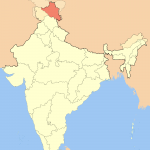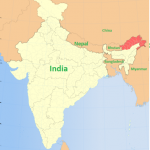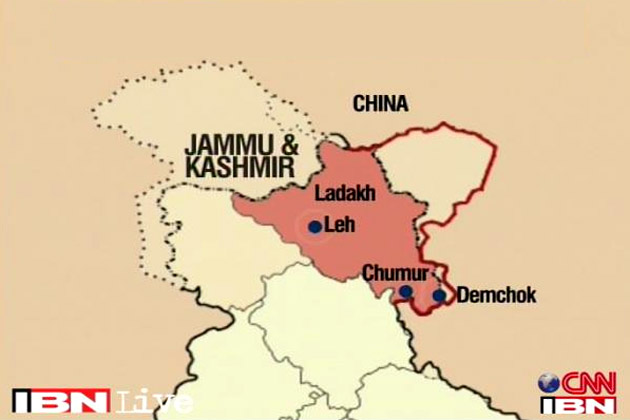Indian and Chinese troops became locked in a 24-hour stand-off in Ladakh in north India in a contested area on the Tibetan border on November 2. A troop of People’s Liberation Army (PLA) personnel entered an area in the Demchok sector, 250 km east of Leh, and put a stop to the construction of a canal there.
The Indian Local Administration had initiated the construction of an irrigation canal under the MNREGA scheme – the Mahatma Gandhi National Rural Employment Guarantee Act, but had not negotiated with the Chinese beforehand and a stand-off ensued. In this contested border area the two sides have an agreement to negotiate any planned construction works there. The Indian contention was that permission is required in the case of defence but not for rural development.

Ladakh
The Economic Times of India quoted an army official as saying “The stand-off ended on Thursday [the following day]. The construction of the canal had been completed by our side. The Chinese soldiers went back and our troops have also returned”. Although the incident was widely reported in the Indian media, the Indian army has officially denied that it took place.

Demchok marks the entry of the River Indus from Tibet into India. It lies within the China Pakistan Economic corridor, (CPEC), which was set up three years ago between China and Pakistan to facilitate “cooperation in energy and transport infrastructure (road, railways, airports)”. It has given rise to conflict with India as it infringes some Indian territory.
This border area between Tibet and India has long been the site of conflict between India and China. The Line of Actual Control is the effective border – it is a 4,057-km line which roughly follows the McMahon Line agreed between British India and Tibet in 1913, but which China has never officially recognised. China has made regular incursions over to the Indian side since the Sino-Indian war in 1962, causing India to heighten defences in the area.

Aranachal Pradesh
Similar tensions exist in the north eastern Indian state of Aranachul Pradesh which China claims as its own, calling it “Little Tibet”.






 Print
Print Email
Email